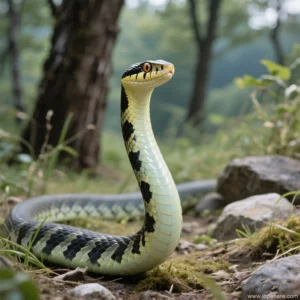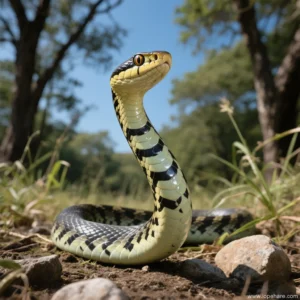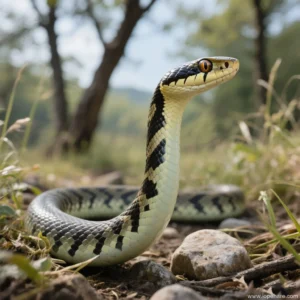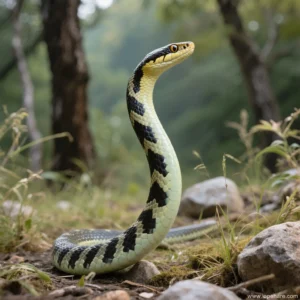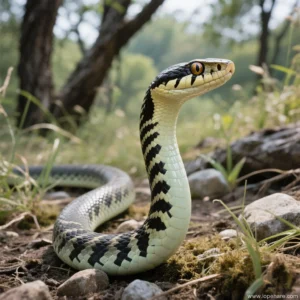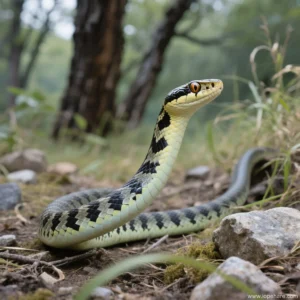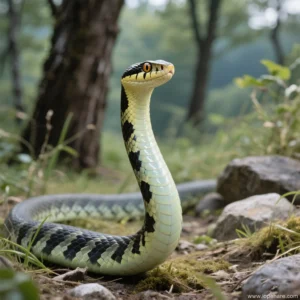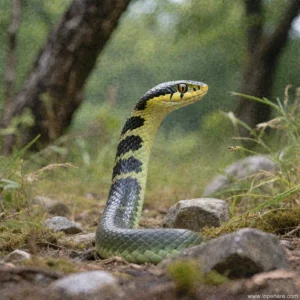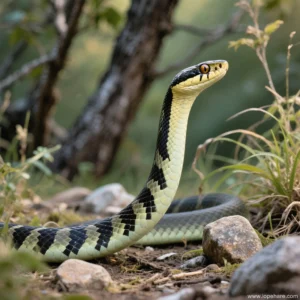
Snake Care
5 Must-Know Facts Before Getting an Elaphe schrenckii as a Pet
At lopehare.com, we understand the fascination with unique and beautiful pets. The Elaphe schrenckii, also known as Schrenck’s Rat Snake or the Amur Rat Snake, is certainly one such animal. Native to Northeast Asia, including regions of Russia, China, and Korea, these snakes are visually striking with their bold black and yellow or cream stripes. While not as commonly kept as ball pythons or corn snakes, they are gaining popularity among reptile enthusiasts. However, as with any pet, especially a less common one, it’s crucial to go beyond just admiring their looks and understand the realities of their care. Before you decide to welcome an Elaphe schrenckii into your home, we’ve compiled five essential facts you absolutely must know.
Fact 1: Generally Docile and Manageable Temperament
One of the reasons for the Elaphe schrenckii’s appeal as a pet is its generally calm and docile nature. While individual personalities can vary, most captive-bred Schrenck’s Rat Snakes are known to become quite handleable with regular, gentle interaction. Hatchlings might be a bit skittish or prone to defensive strikes, but this typically subsides as they grow and become accustomed to their keeper. They are not typically aggressive snakes and are less likely to bite defensively compared to some other species, making them a reasonable choice for keepers who are comfortable with snakes but perhaps not ready for species known for being nippy or difficult to handle.
Their inquisitive nature often makes them interesting to observe, and they explore their surroundings actively. This manageable temperament is a significant plus for prospective owners, but remember that proper handling techniques are always essential for the safety of both the snake and the keeper. Always support their body and avoid sudden movements that could startle them.
Fact 2: Specific Enclosure Requirements Are Key to Health
Providing the correct environment is fundamental to the health and well-being of any reptile, and Elaphe schrenckii are no exception. While perhaps not as strictly demanding as a chameleon, they still have specific needs that differ from desert-dwelling species, for example. Adult Schrenck’s Rat Snakes can reach lengths of 4 to 6 feet (1.2 to 1.8 meters), sometimes even longer. This means they require a spacious enclosure. A minimum size for an adult should be a 4x2x2 foot (120x60x60 cm) enclosure, though larger is always better to allow for adequate movement and a proper thermal gradient.
Unlike some tropical snakes, Elaphe schrenckii come from a more temperate climate. They need a temperature gradient ranging from a cool side of around 70-75°F (21-24°C) to a warm side of 80-85°F (27-29°C). A basking spot is not strictly necessary as they are terrestrial and fossorial (burrowing) but ensuring the warm side is maintained is vital. Heat can be provided using a heat mat connected to a thermostat, or an overhead ceramic heat emitter. Red or blue lights are generally discouraged as they can disrupt the snake’s day-night cycle.
Humidity needs are moderate, typically between 50-70%. This can often be maintained with appropriate substrate like cypress mulch, coconut fiber, or a reptisoil mix. Providing a humid hide is also highly recommended, especially during shedding. Good ventilation is also important to prevent stagnant air, which can lead to respiratory issues.
Creating the Right Setup: Mastering how to care for a Schrenck’s rat snake starts with the enclosure. It needs secure locking to prevent escapes (snakes are escape artists!), multiple hides (at both warm and cool ends), sturdy branches or structures for climbing (even though they are primarily terrestrial, they do climb), and a large water dish heavy enough not to be tipped over.

Fact 3: Straightforward Diet & Feeding Routine
Compared to animals with complex dietary needs requiring live insects or varied fresh produce, the diet of an Elaphe schrenckii is relatively simple, consisting mainly of rodents. In captivity, they are typically fed appropriately sized defrosted rodents (mice or rats). The size of the prey should be roughly equivalent to the snake’s widest point.
Feeding frequency depends on the snake’s age and size. Hatchlings and juveniles may eat every 7-10 days, while adults typically only need to be fed every 10-14 days. Overfeeding can lead to obesity, which shortens their lifespan and causes health problems. Always ensure the prey is completely thawed before offering it, and use feeding tongs to present the food to avoid accidental bites.
These snakes generally have a good feeding response, making feeding time relatively straightforward. It’s a good idea to feed them in their enclosure to avoid regurgitation from stress, but if you are concerned about substrate ingestion, you can feed them in a separate, empty container, returning them to their main enclosure only after they have finished and are settled.
Fact 4: Moderate Size & Decent Lifespan Expectations
As mentioned, Elaphe schrenckii are moderately large snakes, typically reaching 4-6 feet. This is a significant size and requires commitment not just in enclosure space but also in handling and general care. They are not tiny snakes that can live their whole lives in a small tank. Prospective owners must be comfortable handling a snake of this size.
In terms of lifespan, with proper care, an Elaphe schrenckii can live for 15 to 20 years or even longer in captivity. This is a long-term commitment, similar to owning a cat or a small dog. You need to be prepared to provide consistent care for two decades or more. This isn’t a pet to get on a whim; it requires careful consideration of your long-term ability to provide for its needs.
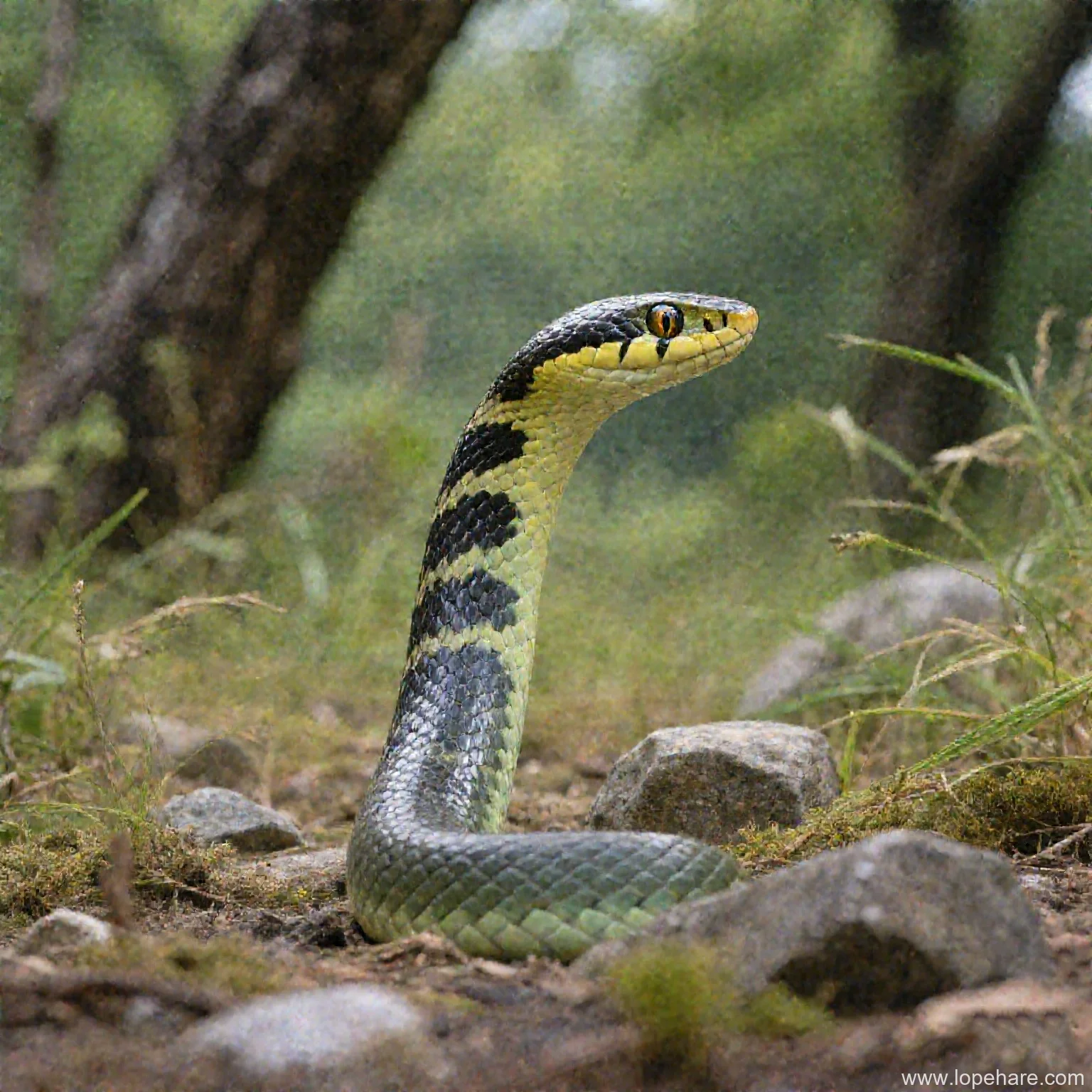
Fact 5: Check Legality & Source Ethically
Before acquiring any exotic pet, it is absolutely essential to check the legality of owning an Elaphe schrenckii in your specific city, county, state, or country. Laws regarding reptile ownership vary widely and can change. What is legal in one area might be prohibited in another. Failing to do this research could result in legal issues, fines, or even the confiscation of your pet.
Furthermore, ethical sourcing is paramount. Always strive to acquire a captive-bred snake from a reputable breeder or a rescue organization. Avoid purchasing wild-caught animals. Wild-caught snakes are often stressed, may carry parasites or diseases, and their removal from the wild can negatively impact native populations. Reputable breeders can often provide information about the snake’s genetics, health history, and ensure you are getting a healthy, well-started animal that is already accustomed to captive conditions and feeding on frozen/thawed prey.
Conclusion: A Rewarding Pet for the Prepared Keeper
The Elaphe schrenckii is a beautiful and generally docile snake that can make a wonderful pet. However, they are not a “beginner” reptile in the same vein as a corn snake or leopard gecko, primarily due to their size requirements and the need for precise environmental control. Understanding their needs for a spacious enclosure with specific temperature and humidity gradients, their simple but regular feeding schedule, their potential size and lifespan, and the importance of ethical sourcing and legality is crucial.
At lopehare.com, we believe that responsible pet ownership begins with thorough research. If you are prepared to meet the requirements of keeping an Elaphe schrenckii, providing them with the right environment and care, you will likely find them to be a fascinating and rewarding companion for many years to come. They embody the unique charm of the niche pet world we are dedicated to exploring and sharing information about.
Citations:
- Information on Elaphe schrenckii natural history and range referenced from: Wikipedia – Elaphe schrenckii
